| Your leaking thatched hut during the restoration of a pre-Enlightenment state. |
Hello, my name is Judas Gutenberg and this is my blaag (pronounced as you would the vomit noise "hyroop-bleuach").
links
decay & ruin
Biosphere II
Chernobyl
dead malls
Detroit
Irving housing
got that wrong
Paleofuture.com
appropriate tech
Arduino μcontrollers
Backwoods Home
Fractal antenna
fun social media stuff
Like asecular.com
(nobody does!)
Like my brownhouse:
Wednesday, February 23 2011
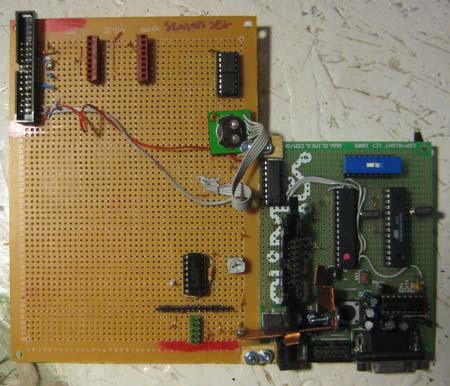
Solar Controller III as it looked a few days ago. Since then I have added some connectors to make it easier to deal with entirely from the topside.
The two Atmegas are visible beneath the blue switch allowing me to switch the serial cable to connect to either one or the other.
Click to enlarge.
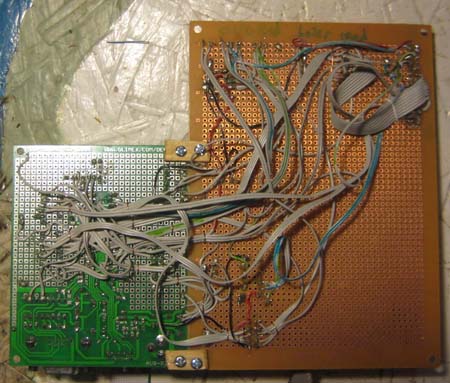
The bottom of Solar Controller III as it looked a few days ago. Click to enlarge.
now a walk down memory lane
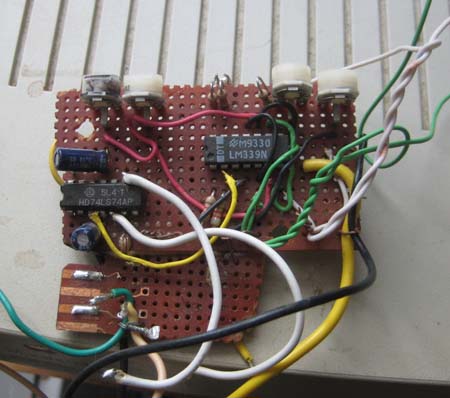
Solar Controller 0, which I'd forgotten I'd actually built, was the first calculator of solar sufficiency (fall, 2005). It used comparators and tiny potentiometers for tweaking temperature cut on and cut off.
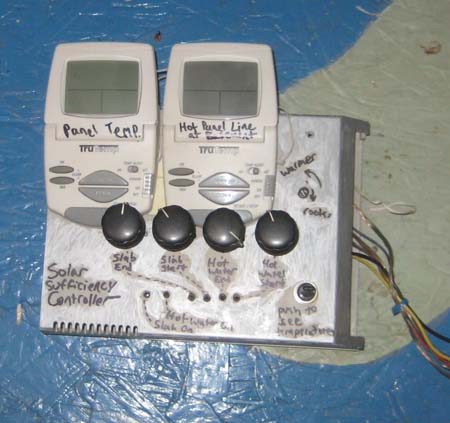
Solar Controller I, built in the fall of 2005. It uses mostly analog circuitry and a flip flop to determine solar sufficiency.
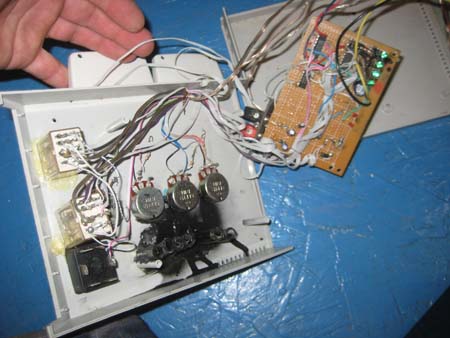
Solar Controller I, the way it looks inside. The relays allowed me to quickly switch the wires from the thermistors to the digital thermostats so I could read the temperatures on their displays -- though this made the controller blind to the sensors while I was looking.
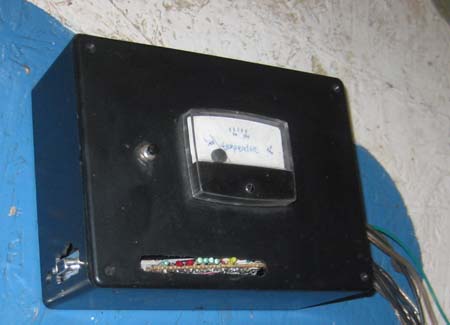
Solar Controller II, built mostly in late 2006, orginally based on an Arduino NG.
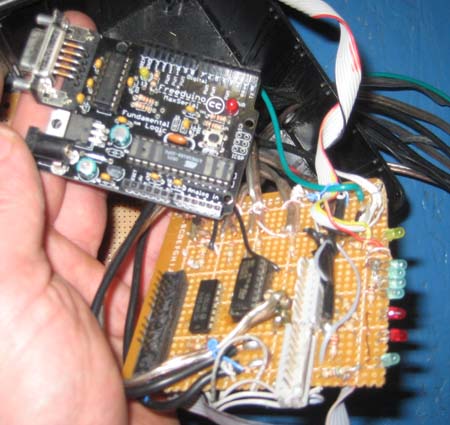
Later I replaced the Arduino NG with a Freeduino MaxSerial, which could finally communicate reliably with the laboratory.
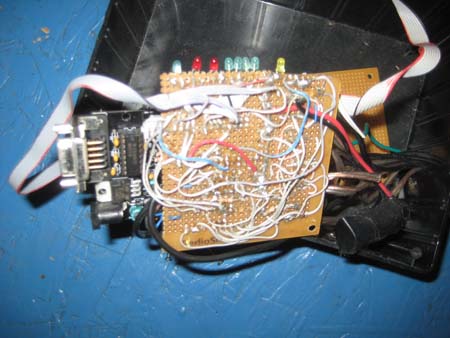
The underside of Solar Controller II.
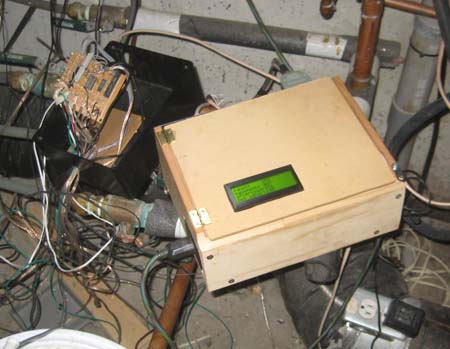
Solar Controller III as it looked during installation today. Solar Controller II is still partially-connected to the left.
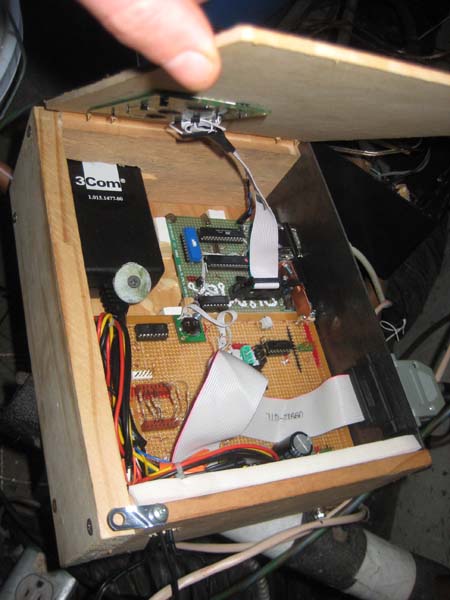
The beautiful insides of Solar Controller III. Note the power brick and the socketed resistors to use with different thermistors.
For linking purposes this article's URL is:
http://asecular.com/blog.php?110223
previous | next